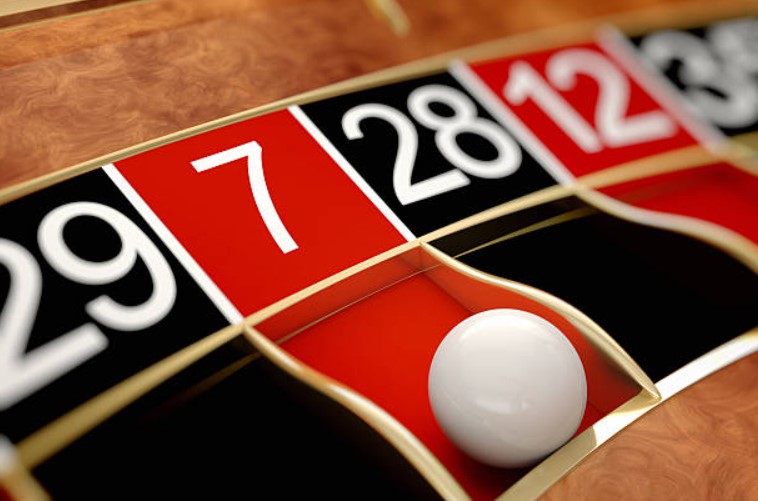Roulette, with its iconic spinning wheel and air of sophistication, has captivated gamblers for centuries. Designed as a blend of chance, strategy, and excitement, roulette offers players a unique casino experience. Whether you’re standing at the rail in a bustling casino or playing from the comfort of your home online, the thrill of guessing where the ball will land remains unmatched. This guide to roulette is tailored for those new to the game, providing a comprehensive breakdown of how to play roulette for beginners. From understanding the basic roulette rules to exploring the various betting systems and strategies, this guide aims to equip you with the knowledge you need to approach the roulette table with confidence and a deeper appreciation of the game’s nuances. Let’s dive into the world of roulette, where every spin brings a chance for new beginnings and potential wins.
Basic rules of playing roulette
Embarking on the adventure of roulette begins with grasping its essential elements, crucial for those just starting out and eager to learn how to play roulette for beginners. At the heart of this venerable casino game is a vibrantly spinning wheel accompanied by a small, darting ball. Participants place their stakes on where they speculate the ball will settle once the wheel stops. The wheel itself is meticulously arranged into numbered pockets from 1 to 36, colored alternately in red and black, with one or two pockets painted green to represent zeros. The basic roulette rules for beginners empower players with a diverse array of betting options, enabling them to place bets on a specific number, the color of a pocket, or the parity (odd or even) of the number.
The path to mastering roulette is paved as players acquaint themselves with the layout of the roulette table, a direct reflection of the wheel’s structure. This insight is fundamental for those mastering roulette rules for beginners. The table is divided into two principal zones for betting—the inside and the outside. The inside zone offers bets on specific numbers directly, yielding higher payouts due to the decreased likelihood of winning. In contrast, the outside zone provides opportunities to bet on broader categories of numbers or traits such as color, parity, and range (either high from 19 to 36 or low from 1 to 18). By placing their chips on the designated parts of the table corresponding to their bets, players comply with basic roulette rules, skillfully navigating the intricacies of the game with strategic bets.

Roulette types
A richer understanding of roulette’s subtleties emerges from distinguishing between its two main variants—American and European. This distinction is crucial for beginners learning how to play European roulette, as it significantly affects both the strategy and the odds of the game. The American version introduces a wheel configured with 38 slots, comprising numbers 1 through 36, a single zero, and an additional double zero, which raises the house edge and intensifies the game’s challenge. Alternatively, the European version presents a more player-conducive layout with 37 slots by omitting the double zero, prevalent in its American counterpart.
For those exploring how to play European roulette, it’s vital to understand that this version not only decreases the house edge but also enhances the likelihood of player winnings, thereby making it an attractive option for those focused on mastering how to play roulette and win. The guide to roulette routinely suggests that beginners opt for the European version as it streamlines the game and incrementally shifts the odds in their favor. This foundational approach is not merely about learning the game but about strategically maneuvering through its odds to optimize enjoyment and potential returns.
Betting zones (internal and external)
Understanding the betting zones in roulette is fundamental for beginners looking to grasp the basic roulette rules. The roulette table is divided into two key areas known as the internal and external zones, each offering different types of bets. The internal zone, or inside bets, is for betting on specific numbers or small combinations of numbers. These bets are placed directly on the numbers themselves or on the lines between numbers on the layout. Inside bets are generally high risk but come with high rewards, appealing to those who enjoy the thrill of potentially large payouts.
External, or outside bets, provide a broader range of betting options that cover larger sections of the roulette wheel. These are placed on designated areas of the table that represent groups of numbers or specific characteristics, such as color (red or black), whether a number is odd or even, or whether it falls in a certain range (low 1-18 or high 19-36). These bets offer lower payouts than inside bets but have a higher chance of winning, making them ideal for roulette for beginners who may prefer more frequent, smaller wins to steadily build their bankroll.
Types of bets
Within the game of roulette, bets can be broadly categorized into two types: inside and outside bets. Inside bets are placed on specific numbers or small groups of numbers. They offer higher payouts due to their lower probabilities of winning. The types of inside bets include straight-up bets (betting on a single number), split bets (betting on two adjacent numbers), and street bets (betting on three consecutive numbers on a line).
Outside bets, on the other hand, cover larger groups of numbers and offer higher chances of winning but with smaller payouts. These include betting on color (red or black), even or odd numbers, and larger numerical groupings like dozens or columns. Roulette tips for beginners often suggest starting with outside bets, as they are easier to understand and provide more frequent wins, which can be encouraging for new players.
Basic roulette strategies
Developing a basic roulette strategy is an excellent way to reduce losses and enhance the enjoyment of the game. A widely known technique is the Martingale System, which involves doubling your bet after each loss. This strategy aims to recoup past losses with a potential win on future spins. It’s especially favored by those new to roulette for beginners, as it seems straightforward and promises quick recovery. However, the Martingale requires a considerable bankroll to sustain the doubling bets, particularly during an extended losing streak, and is most effective on even-money outside bets like red/black or odd/even.
Another integral part of a basic roulette strategy is the D’Alembert System, which offers a less aggressive and more sustainable alternative to the Martingale. In this system, players increase their stakes by a predetermined amount after a loss and decrease them by the same amount after a win. This leads to a slower progression in bet sizes, making it easier to manage and less risky, which is appealing for those looking to play roulette and win with a more conservative betting style. Embracing these strategies is crucial for anyone dedicated to learn roulette strategy effectively, providing a structured approach to managing their funds and enhancing their understanding of risk.

Betting systems
Exploring deeper into roulette strategies reveals a variety of complex betting systems designed to optimize the player’s chances. The Fibonacci sequence is one such sophisticated method, where bets are based on the progressive numbers of the Fibonacci series. This system encourages players to increase their bets according to the sequence after a loss and decrease after a win, balancing the risk across more spins. This subtler approach to increasing and decreasing bets is often highlighted in advanced roulette tips for beginners, promoting disciplined and strategic betting.
The Labouchere System is another learn roulette strategy that involves writing down a sequence of numbers and betting the sum of the first and last numbers on each round. If the bet is successful, the player removes the numbers used from the list; if the bet is lost, the amount lost is added to the end of the sequence. This continues until all numbers are eliminated or the player chooses to stop. The Labouchere is a flexible system that allows players to adjust their betting tactics based on their current performance, making it a dynamic and interesting way to engage with roulette.
General advice
As you delve into how to play roulette and win, it’s vital to acknowledge the game’s inherent randomness. The most important roulette tip for beginners is to manage their finances wisely. Setting a budget before playing and sticking to it can prevent the common pitfall of overspending due to the game’s fast-paced and exhilarating nature. It’s crucial to play within your limits to maintain a healthy enjoyment of the game.
Furthermore, observing and learning from more experienced players can offer invaluable insights into the game’s nuances. This learning can include strategic betting, game pace control, and understanding roulette the odds, which can greatly enhance a beginner’s gameplay. Enjoyment should always be your primary goal. Focusing on having fun and viewing any winnings as a bonus can make your roulette explained more fulfilling. Engaging with the game thoughtfully and respectfully acknowledges its complexity and enhances your overall interaction with the casino environment.

